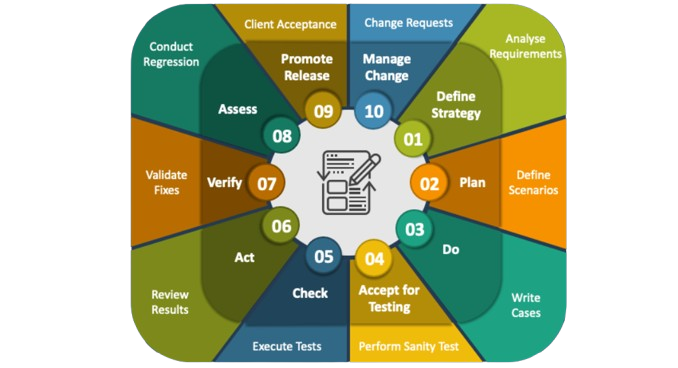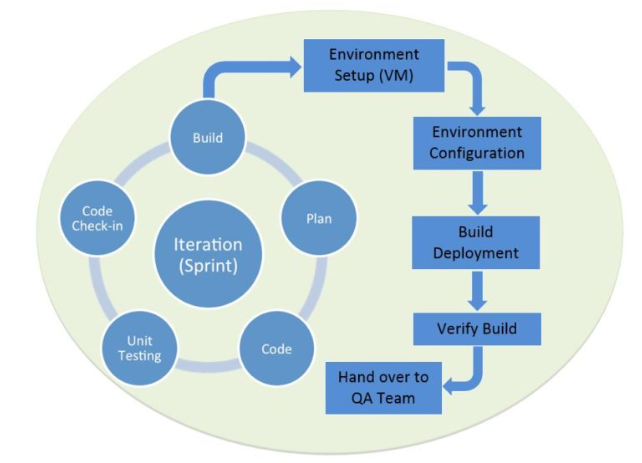01 October 2024
In today’s fast-paced software development landscape, Quality Assurance (QA) plays a crucial role in ensuring the delivery of high-quality, defect-free products. A structured QA process is essential to prevent project delays, reduce costs, and ensure optimal software performance. Without a proper QA setup, software development can become chaotic, resulting in missed deadlines and suboptimal quality.
In this blog, we’ll dive into the best practices for creating an effective testing process from scratch, allowing teams to streamline and improve their QA efforts.
Why a Controlled QA Process is Essential
A controlled QA process brings clarity, consistency, and a robust strategy that aligns with the project’s goals. When testing is disorganized, the project can suffer from unplanned delays, poor product quality, and increased costs due to late-stage bug fixes. A well-structured QA process follows a clear path from start to finish in the Software Testing Life Cycle (STLC), reducing unexpected surprises during testing and ensuring the product meets customer expectations.
Example: Imagine a startup launching a new mobile app. Without a solid QA process, the app might hit the market with bugs that could have been identified early, resulting in negative reviews, a poor user experience, and costly updates later.

Who is Responsible for Setting Up the Testing Process?
Typically, a test manager is responsible for setting up the testing process. In smaller teams, the test lead or team members may also take on this responsibility after comprehensive discussions. Regardless of who initiates it, the goal remains the same: improved quality, reduced costs, and optimized testing time.
Best Practices for Implementing a Testing Process
To ensure a successful testing process, consider the following best practices and methodologies:
1. Create and Maintain Test Plan and Strategy Documents
Establish a clear process for developing and updating test plans and strategies. These documents serve as the foundation for all testing activities, outlining objectives, scope, resources, and timelines.
2. Involve Testers Early in the Development Process
Incorporating testers during the requirement-gathering phase allows for early identification of defects, significantly reducing the cost of fixes later in the product life cycle. This proactive approach fosters collaboration between development and testing teams.
3. Clear Communication with Stakeholders:
Establish open communication channels with project management and stakeholders to ensure expectations and outcomes align. This helps keep everyone on the same page.
4. Define Build and Deployment Processes:
Set rules for getting new builds. For example, decide whether new builds should be received daily or weekly. Define how the build will be deployed, who will deploy it, and the steps to take if deployment fails.
5. Implement Build Verification Testing (BVT)
Develop a process for executing smoke tests on every new build. Automating these tests can enhance efficiency, allowing for quick feedback. If a smoke test fails, the build should be rejected, and a clear protocol for notifying relevant stakeholders should be defined.

6. Manage Test Cases Effectively
Establish a systematic approach for writing and managing test cases. This includes defining the types of test cases to be covered, the format for documentation, and the test management tools to be utilized (e.g., HP Quality Center, TestLink, TestRail).
7. Define Defect Management Procedures
Utilize defect management tools (such as JIRA or Bugzilla) to streamline the process of logging, tracking, and resolving defects. Clearly outline the steps for defect submission, assignment, severity classification, and status updates.
8. Create Reporting Protocols
Develop internal reporting procedures that specify who reports to whom, the frequency of reports (daily, weekly), and the content of reports (issues, obstacles, status updates). This ensures transparency and accountability within the testing team.
9. Estimate Test Efforts Accurately
Implement a structured process for estimating testing efforts. Consider factors such as project scope, complexity, and resource availability to provide accurate estimates that inform planning.
10. Leverage Automation Tools
Identify and utilize appropriate automation tools to enhance testing efficiency. Establish guidelines for writing and maintaining test scripts, as well as defining which tests will be automated versus those that will remain manual.
11. Build and Maintain a Test Environment
Create a test environment that closely mirrors the production environment. Regularly update this environment to reflect changes in production, and establish processes for maintaining test infrastructure, data, and backups.
12. Assess Team Skills
Conduct regular assessments of team skills to identify areas for improvement and training needs. A well-equipped team is essential for executing a successful testing process.
Continuous Improvement of QA Processes
It’s crucial to review and refine the testing process periodically. By identifying key areas for improvement, the team can enhance efficiency and move toward an optimized testing framework. As the project matures, the QA process should evolve, moving from an initial phase to a controlled, efficient, and eventually optimized state.
Consider implementing a formal process improvement model like TMMi (Test Maturity Model integration) or TPI NEXT (Test Process Improvement) to guide your continuous improvement efforts.
For Newcomers: How to Get Started in QA Projects
If you’re new to a QA project, especially one where the process is already established, it’s essential to start by understanding the project’s requirements and components. Here’s a quick roadmap to follow:
- Understand the Requirements: Read through the project documents, and identify the major components. Review these components with senior members or mentors to validate your understanding.
- Communicate Regularly: Set up meetings with team leads and mentors. Use these meetings to clarify any doubts or questions you may have.
- Familiarize Yourself with the Business Rules: Learn about the project’s business rules and processes. Once you understand the project, start with small tasks like functional or UI testing assignments.
- Pay Attention to Details: Precision is key, especially during the early stages of your career in QA. Engage with team members and developers to improve your understanding and add value to the project.
- Learn the Tools: Familiarize yourself with the testing tools and frameworks used in the project. This might include test management tools, automation frameworks, and defect tracking systems.
- Understand the SDLC: Get a good grasp of the Software Development Life Cycle (SDLC) model being used in the project, whether it’s Agile, Waterfall, or a hybrid approach.
- Practice Test Case Writing: Start writing test cases for simple features. Have them reviewed by senior team members to improve your skills.
- Learn Automation Basics: Even if you’re not directly involved in test automation, understanding the basics can be beneficial. Consider learning a programming language commonly used in test automation, such as Python or Java.
- Stay Updated: Keep yourself informed about the latest trends and best practices in software testing. Attend webinars, read blogs, and participate in online QA communities.
Earn Respect by Adding Value
By showing dedication and contributing effectively to the project, you’ll earn respect within the team and establish your role. Remember, quality assurance is not just about finding bugs—it’s about improving the overall quality of the software and the development process.
As you gain experience, don’t hesitate to suggest improvements to the QA process. Your fresh perspective might bring valuable insights that can benefit the entire team.
Conclusion
Setting up a winning SQA process is crucial for delivering high-quality software products. By following these best practices and continuously improving your processes, you can create a robust QA framework that not only catches defects but also enhances the overall quality of your software development lifecycle. Remember, effective QA is a collaborative effort that involves all stakeholders and contributes significantly to the success of your software projects.
